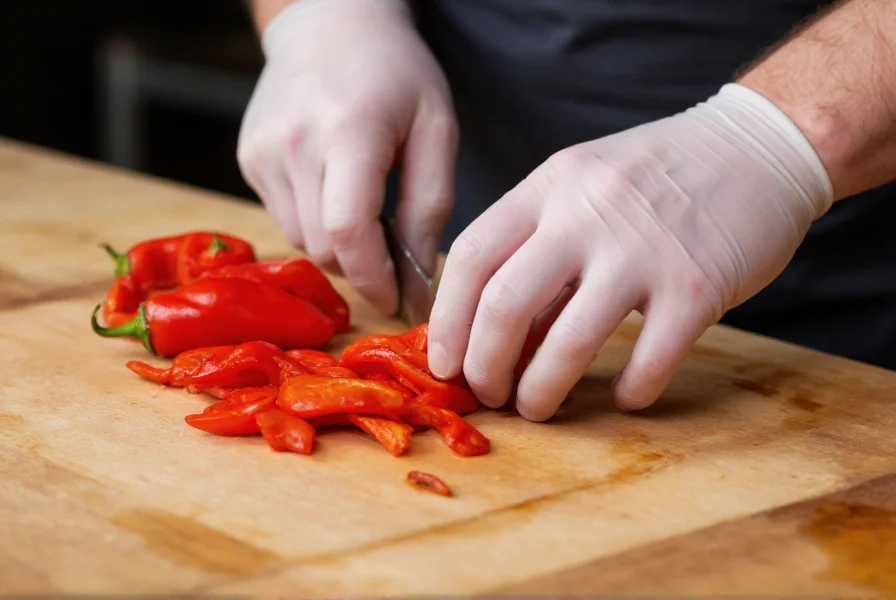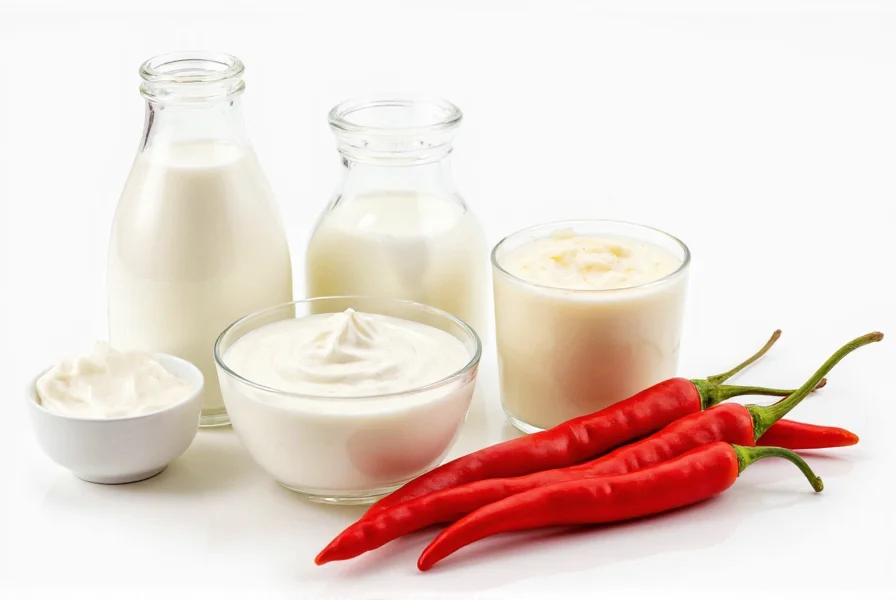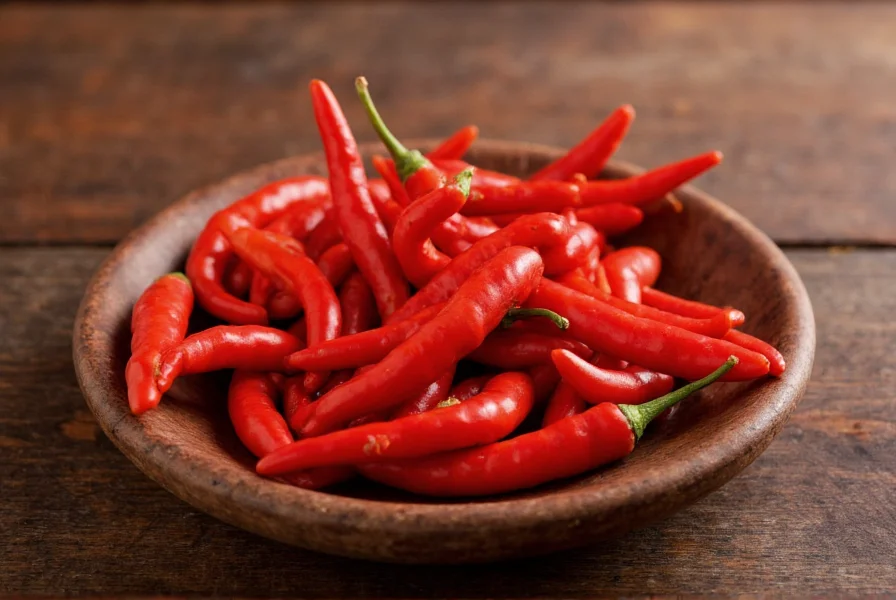Understanding spicy chilies requires knowledge of their heat measurement, varieties, and practical applications. This comprehensive guide explores the science behind chili heat, compares popular spicy chili varieties, and provides essential handling tips for culinary use.
The Science Behind Spicy Chili Heat
Capsaicinoids, primarily capsaicin, activate TRPV1 receptors in our mouths and skin, creating the burning sensation we associate with spicy food. The concentration of these compounds determines a chili's heat level, measured using the Scoville scale. Originally developed in 1912 by Wilbur Scoville, this scale quantifies heat by determining how many times capsaicin must be diluted before it becomes undetectable to human testers. Modern high-performance liquid chromatography (HPLC) provides more precise measurements, but the Scoville Heat Unit (SHU) remains the standard reference.
Environmental factors significantly impact chili heat. Soil composition, climate conditions, water availability, and even the plant's stress levels can cause variations in capsaicin production. Chilies grown in hotter, drier conditions typically develop higher heat levels as a natural defense mechanism.
Popular Spicy Chili Varieties Compared
| Chili Variety | Scoville Heat Units | Flavor Profile | Common Uses |
|---|---|---|---|
| Jalapeño | 2,500-8,000 SHU | Grassy, bright with vegetal notes | Salsas, nachos, pickled preparations |
| Serrano | 10,000-23,000 SHU | Sharp, bright with citrus undertones | Pico de gallo, hot sauces, guacamole |
| Habanero | 100,000-350,000 SHU | Fruity, floral with tropical notes | Caribbean sauces, hot sauces, marinades |
| Ghost Pepper (Bhut Jolokia) | 800,000-1,041,427 SHU | Smoky, slightly sweet with delayed burn | Extreme hot sauces, competitive eating |
| Carolina Reaper | 1,400,000-2,200,000 SHU | Fruity upfront with intense delayed heat | Specialty hot sauces, novelty foods |
Practical Handling and Culinary Applications
Working with extremely spicy chilies requires proper technique to avoid discomfort. Always wear gloves when handling super-hot varieties like ghost peppers or Carolina Reapers, as capsaicin can transfer to sensitive areas. Never touch your face after handling chilies, and wash hands thoroughly with soap and water—even better, use a specialized capsaicin-removing cleanser.
Chefs recommend removing seeds and white membranes (placenta) to reduce heat intensity, as these contain the highest concentration of capsaicin. When cooking with spicy chilies, add them early for integrated heat or later for more pronounced spiciness. Remember that cooking doesn't destroy capsaicin—it merely distributes it throughout the dish.

Safety Considerations for Spicy Chili Enthusiasts
Understanding how to mitigate chili burn is essential knowledge for anyone working with spicy chilies. Contrary to popular belief, water doesn't effectively neutralize capsaicin—it's hydrophobic and actually spreads the compound. Dairy products containing casein (milk, yogurt, sour cream) provide the most effective relief by binding to capsaicin molecules. For skin exposure, rubbing alcohol or specialized capsaicin removers work better than water.
Consuming extremely spicy chilies carries potential health risks, particularly for individuals with gastrointestinal sensitivities. The intense heat can trigger temporary digestive distress, including stomach pain and diarrhea. People with conditions like irritable bowel syndrome or ulcers should exercise caution with high-heat chilies. Always build tolerance gradually rather than jumping to extremely hot varieties.

Cultural Significance of Spicy Chilies Worldwide
Spicy chilies have become integral to culinary traditions across the globe, though their adoption varies significantly by region. In Mexico, chilies form the foundation of complex moles and salsas, with regional varieties like the chiltepin representing traditional heritage. Southeast Asian cuisines feature bird's eye chilies prominently in Thai and Vietnamese dishes, where heat balances with sweet, sour, and salty elements.
Indian cuisine utilizes a wide spectrum of chilies, from the moderately hot cayenne to the intensely spicy Naga varieties, often incorporating them into spice blends where heat complements complex flavor profiles. In contrast, many European cuisines historically avoided extreme heat, though this has changed dramatically with globalization and the popularity of dishes like arrabbiata pasta.
Frequently Asked Questions
What makes some chilies spicier than others?
The spiciness of chilies comes from capsaicin concentration, which varies by variety and growing conditions. Genetics determine a chili's potential heat range, while environmental factors like soil, climate, and water stress influence actual capsaicin production. The white membranes and seeds contain the highest concentration of capsaicin, making them significantly hotter than the flesh.
How can I reduce the spiciness of a dish that's too hot?
To reduce spiciness in a dish, add dairy products like yogurt or sour cream, which contain casein that binds to capsaicin. Acidic ingredients like lime juice or vinegar can also help balance heat. Adding more of the non-spicy ingredients (like tomatoes or beans) dilutes the overall heat. Sugar or honey counteracts heat perception, while starchy foods like rice or bread absorb some capsaicin. Remember that cooling methods work better than simply adding more liquid.
Are there health benefits to eating spicy chilies?
Yes, moderate consumption of spicy chilies offers several potential health benefits. Capsaicin may boost metabolism and support weight management. Chilies are rich in vitamin C and antioxidants. Some studies suggest capsaicin has anti-inflammatory properties and may help with pain relief. Regular consumption can build tolerance to heat while potentially improving circulation. However, excessive consumption can irritate the digestive system, so moderation is key.
Why does spicy food feel hotter when eating it than when handling the chili?
Spicy food feels hotter when eating because the mouth contains more TRPV1 receptors than skin, making it more sensitive to capsaicin. Additionally, the warmth of food enhances capsaicin's volatility, increasing its interaction with receptors. When handling chilies, only surface contact occurs, whereas eating distributes capsaicin throughout the mouth. The delayed heat response of some super-hot chilies creates an initial mild impression that intensifies as capsaicin penetrates deeper tissue layers.











 浙公网安备
33010002000092号
浙公网安备
33010002000092号 浙B2-20120091-4
浙B2-20120091-4